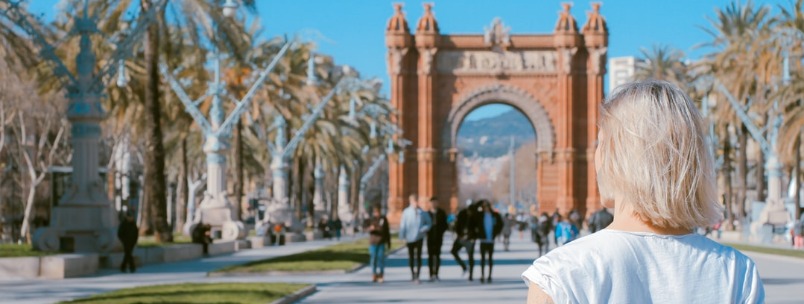What’s the Allure?
Barcelona is the proud capital of the Spanish region of Catalonia. It’s a scenic coastal city featuring beachfront promenades, impressive mountain ranges and a medieval old town (Barri Gòtic) that constantly bustles with activity. Its Modernist architecture – often the work of celebrated architect Antoni Gaudi – is some of the most unique in the world. Factor in Barcelona’s enviable Mediterranean climate and it comes as no surprise that this cosmopolitan gem welcomes several million visitors every year.
Points of Interest
To best understand Barcelona’s colorful culture, spend time discovering its iconic monuments. Enjoy a walk on the fashionable Paseo de Gracia, the 19th-century hub for the city’s most influential citizens. Visit some of their former residences including whimsical Casa Mila, Casa Batllo and Casa Fuster. Meanwhile in the old town, explore the Cathedral, the Picasso Museum or Santa Maria del Mar church after a brief journey of discovery through the labyrinth of winding streets.
As a thriving cosmopolitan city, Barcelona features cuisine from throughout the world. Still, don’t hesitate to take full advantage of the specialty fresh seafood available thanks to the excellent coastal weather. For the full Catalan experience, find an oceanfront restaurant in the Barceloneta or Villa Olympica neighborhoods and devour small plates of assorted seafood tapas. The latter is also one of the most popular areas for nightlife; it boasts a strip of clubs and bars that stay open until the wee hours.
Activities
Barcelona is a great outdoor city. The beachfront areas offer plenty of activity options including jogging, cycling, skating, skateboarding, swimming and volleyball. For those that prefer to watch their sports, Barcelona is home to one of the most famous soccer (football) teams in the world. Visiting the impressive Camp Nou (FC Barcelona’s stadium) is an adventure in itself even if you don’t follow sports. For more cultural activities, the city’s close proximity to two wine regions encourages touring, wine tastings and wine pairings with tapas.
Why We Love it
With so many European capitals to discover, Barcelona could have easily been dismissed as a beach town specializing in leisure. Fortunately, its strong ties to a fascinating cultural past will never allow it to rest on its laurels. It continues to build sophisticated, modern structures right alongside centuries-old edifices. The city often impresses with its special brand of fashion, food, and art. Most remarkably, Barcelona has managed to stand out by simply not trying to emulate other cities.
Sightseeing in Barcelona
Barcelona has boomed since the early 1990s when preparations for the Olympic Games wrenched it into modernity, and today it remains well in the vanguard of other Spanish cities (with the possible exception of Madrid) in terms of prosperity, stability and cultural activity. It’s a confident, progressive city, looking towards the rest of Europe for its inspiration and its innovations – the classic tourist images of Spain seem firmly out of place in Barcelona’s bustling central boulevards and stylish modern streets. And style is what brings many visitors here, attracted by enthusiastic newspaper and magazine articles which make much of the outrageous architecture, user-friendly city design, agreeable climate, and frenetic nightlife. Even the medieval Gothic quarter and its once-notorious red-light area have been swept up by the citywide renovation program, which is still running at full tilt. As the new millennium starts Barcelona has continued to blossom from provincial city to putative European capital.
It’s no accident that the city’s current development outstrips most of the rest of Spain. With the return to democracy following the death of Franco, the various Spanish regions were allowed to consolidate their cultural identities through varying degrees of political control over their own affairs. Catalunya (Catalonia in English), of which Barcelona is the capital, has a historical identity going back as far as the ninth century, when the first independent County of Barcelona was established, and through the long period of domination by Castile, and even during the Franco dictatorship when a policy of cultural suppression was pursued, it proved impossible to stifle Catalan ethnicity. In Barcelona itself, this regionalism is complemented by a strong socialist tradition – the city was a bastion of the Republican cause during the Civil War, holding out against Franco until January 1939, and remained the scene of protests and demonstrations throughout the dictatorship.
As a result of this urge to retain its own identity, Barcelona has long had the reputation of being at the forefront of Spanish political activism and of radical design and architecture, but these cultural distinctions are rapidly becoming secondary to the city’s position as one of the most dynamic and prosperous commercial centers in the country. As the money (much of it from the EU) continues to pour in, the economic transformation of a city deprived under Franco, continues at a remarkable pace: entire districts, from the harbor to the suburbs, have been replanned and rebuilt; historic buildings and museums have been given face-lifts, and roads and communications have been upgraded. In part, this progress is due to the huge psychological shove that the granting of the 1992 Olympics gave to Barcelona. When the Games had finished, the city was left with an entirely new harbor development containing the futuristic Olympic Village. And along with a construction programme that touched every corner of the city, went the indisputable knowledge that these had been Barcelona’s Olympics, and not Spain’s – an important distinction to the Catalan people, who, bolstered by the gradual integration of immigrants from other parts of Spain, endow the city with a character distinct from Spain’s other regional capitals.
Since 1992, the developments have continued unabated; indeed Barcelona’s drive for self-improvement and self-promotion seems to know no bounds. The commercial port continues to expand and is now dominated by a futuristic World Trade Center set in the central harbor, while the airport is given a new runway and the city anxiously awaits the arrival of a high-speed train (AVE) line. There’s pride in the city which is expressed in remarkable cultural energy, seen most perfectly in the glorious modernista (Art Nouveau) architecture that studs the city’s streets and avenues. Antoni Gaudí is the most famous of those who have left their mark on Barcelona in this way: his Sagrada Família church is rightly revered, but just as fascinating are the (literally) fantastic houses and apartment buildings that he and his contemporaries designed. In art, too, the city boasts a stupendous legacy, from important Romanesque and Gothic works to major galleries containing the life’s work of the Catalan artists Joan Mirķ and Antoni Tāpies, and – perhaps the greatest draw of all – a representative collection of the work of Pablo Picasso.
For all its go-ahead feel, though, Barcelona does still have its problems. A traditionally homogeneous society, accustomed to Spanish emigration, has been changed forever by the arrival of large numbers of immigrants from Asia, Africa, and South America, many of whom enter illegally, looking to grab a share of the city’s economic success. Partly as a consequence of this, the petty crime rate has rocketed, and tourists must take precautions when visiting the city, and despite the work done on the infrastructure, there is still a lot to do. There’s also a growing gap between rich and poor, and one repercussion of the gentrification of poorer districts is that the original dwellers are being priced out – real estate speculation has led to a curious situation wherein the city, in the midst of an acute housing crisis, has tens of thousands of empty apartments which are not on the market.
There’s a problem, too, in Barcelona’s relationship with the rest of Catalunya. More than half the region’s inhabitants live in the city and its surroundings, creating an uneasy imbalance that becomes clear if you travel through the depopulated inland and mountain areas, and which is most obvious in the political sphere – Catalunya is conservative and regionalist, Barcelona is socialist and nationalist. At times the city has prospered at the expense of the rest of Catalunya, and though there are pockets of wealth and interest – on the coast, in the ski resorts – there’s a nagging feeling that Barcelona is very much the main event. It’s not a feeling that holds firm if you do make the effort to spend time in other parts of the region, but it is indicative of the fact that Barcelona, boasting loudly of its European character and city style, is in danger of forgetting its wider roots and becoming self-absorbed and inward-looking.
Must-See Tourist Attractions in Barcelona
Barcelona is the second-largest city in Spain and one of the most visited tourist destinations in the world. Founded as a Roman city, Barcelona is located on the Mediterranean coast. There are so many things to do and see during a vacation in Barcelona that the only difficulty you will meet will be choosing between them all. Below you can find a list of some of the most impressive tourist attractions in Barcelona. Make sure to include them in your route to the Spanish city.
La Sagrada Familia
La Sagrada Familia is one of the most famous and most beautiful attractions in Barcelona. The church is a UNESCO World Heritage Site, is located in the center of the Spanish city. La Sagrada Familia is a masterpiece of Gothic architecture and a landmark of Barcelona. The Roman Catholic Church was designated in 1984.
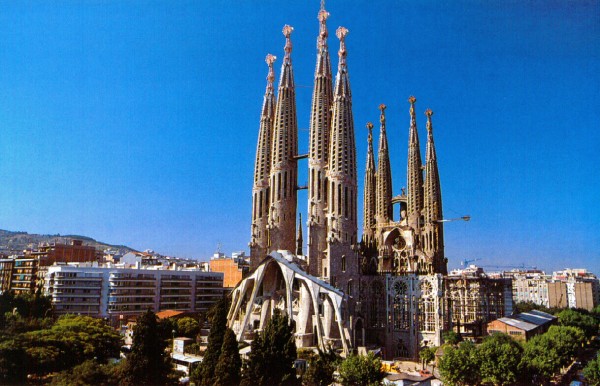
Barri Gotic
This is the center of the old city of Barcelona. Here, visitors will find numerous historical buildings, as well as cultural venues. Actually, many of the buildings that can be visited in this area of Barcelona date back to medieval times. Some were built during the Roman settlement. La Sagrada Familia is located in Barri Gotic, too.
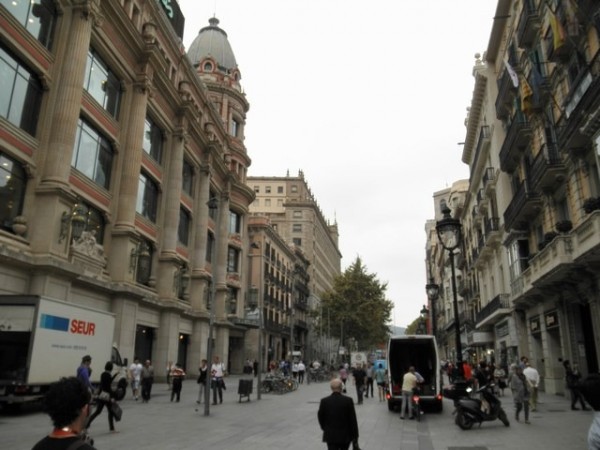
Barcelona Beaches
The beaches in Barcelona have been listed among the most beautiful beaches in the world. According to National Geographic, the number 1 Beach in the World is located in this Spanish city. Some of the main beaches in Barcelona include Sant Sebastia, Sant Miquel, Nova Icaria, Nova Mar Bella, Bogatell, Somorrostro and Llevant. These are perfect destinations for visitors looking for relaxation.
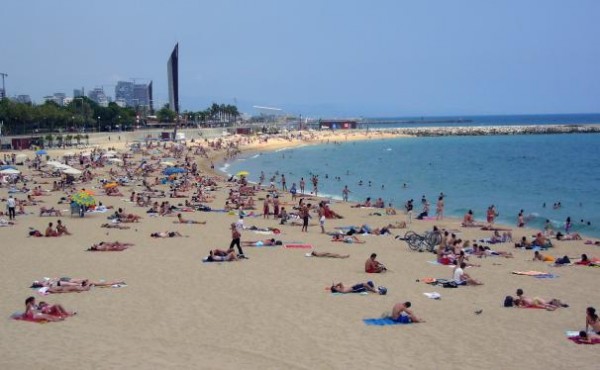
National Art Museum of Catalonia
The National Art Museum of Catalonia is located on the Montjuic hill. This museum is notable for its impressive collections of Romanesque church paintings and Catalan art and design. It is homed by the Palau Nacional, which dates back to 1929.
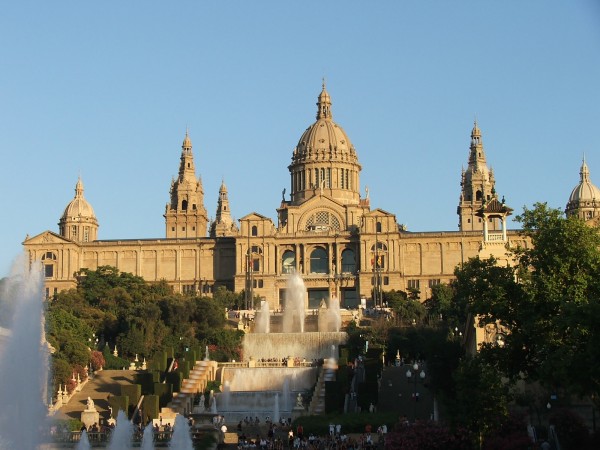
Parc de la Ciutadella
This lovely park was established in Barcelona in the 19th century. The park homes the city’s zoo, a lake, some museums, as well as the Parliament of Catalonia. One of the most visited tourist attractions in Barcelona, Parc de la Ciutadella is the perfect destination for sports, picnics, as well as relaxing walks.

Barcelona is a popular destination for visitors arriving from all over the world. One of the main tourist destinations in Europe, the city has a lot to offer. If a trip to this city is coming soon, visiting the aforementioned attractions is a must. Which of these tourist attractions in Barcelona would you like to include into your route?
